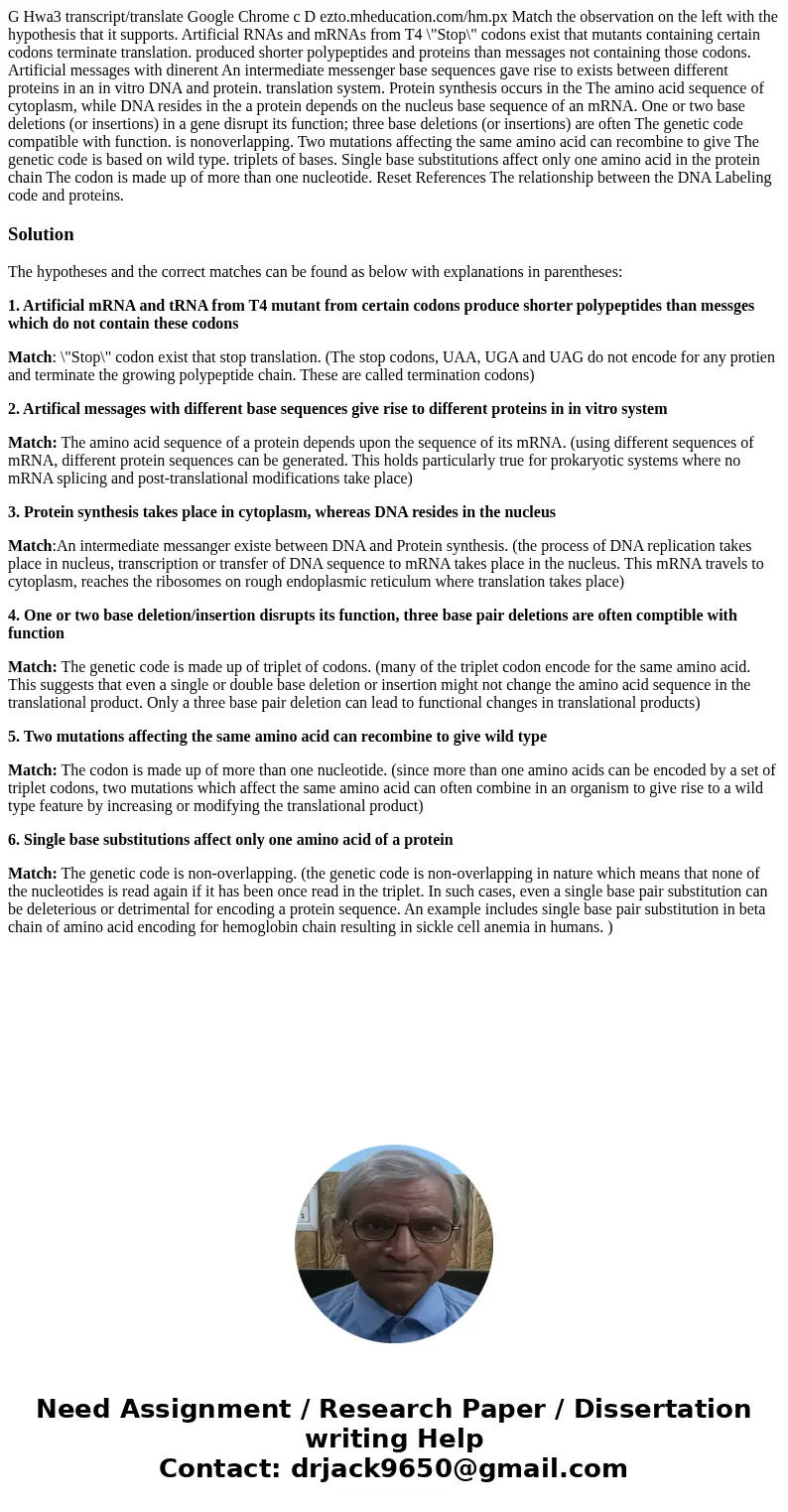G Hwa3 transcripttranslate Google Chrome c D eztomheducation
Solution
The hypotheses and the correct matches can be found as below with explanations in parentheses:
1. Artificial mRNA and tRNA from T4 mutant from certain codons produce shorter polypeptides than messges which do not contain these codons
Match: \"Stop\" codon exist that stop translation. (The stop codons, UAA, UGA and UAG do not encode for any protien and terminate the growing polypeptide chain. These are called termination codons)
2. Artifical messages with different base sequences give rise to different proteins in in vitro system
Match: The amino acid sequence of a protein depends upon the sequence of its mRNA. (using different sequences of mRNA, different protein sequences can be generated. This holds particularly true for prokaryotic systems where no mRNA splicing and post-translational modifications take place)
3. Protein synthesis takes place in cytoplasm, whereas DNA resides in the nucleus
Match:An intermediate messanger existe between DNA and Protein synthesis. (the process of DNA replication takes place in nucleus, transcription or transfer of DNA sequence to mRNA takes place in the nucleus. This mRNA travels to cytoplasm, reaches the ribosomes on rough endoplasmic reticulum where translation takes place)
4. One or two base deletion/insertion disrupts its function, three base pair deletions are often comptible with function
Match: The genetic code is made up of triplet of codons. (many of the triplet codon encode for the same amino acid. This suggests that even a single or double base deletion or insertion might not change the amino acid sequence in the translational product. Only a three base pair deletion can lead to functional changes in translational products)
5. Two mutations affecting the same amino acid can recombine to give wild type
Match: The codon is made up of more than one nucleotide. (since more than one amino acids can be encoded by a set of triplet codons, two mutations which affect the same amino acid can often combine in an organism to give rise to a wild type feature by increasing or modifying the translational product)
6. Single base substitutions affect only one amino acid of a protein
Match: The genetic code is non-overlapping. (the genetic code is non-overlapping in nature which means that none of the nucleotides is read again if it has been once read in the triplet. In such cases, even a single base pair substitution can be deleterious or detrimental for encoding a protein sequence. An example includes single base pair substitution in beta chain of amino acid encoding for hemoglobin chain resulting in sickle cell anemia in humans. )

 Homework Sourse
Homework Sourse